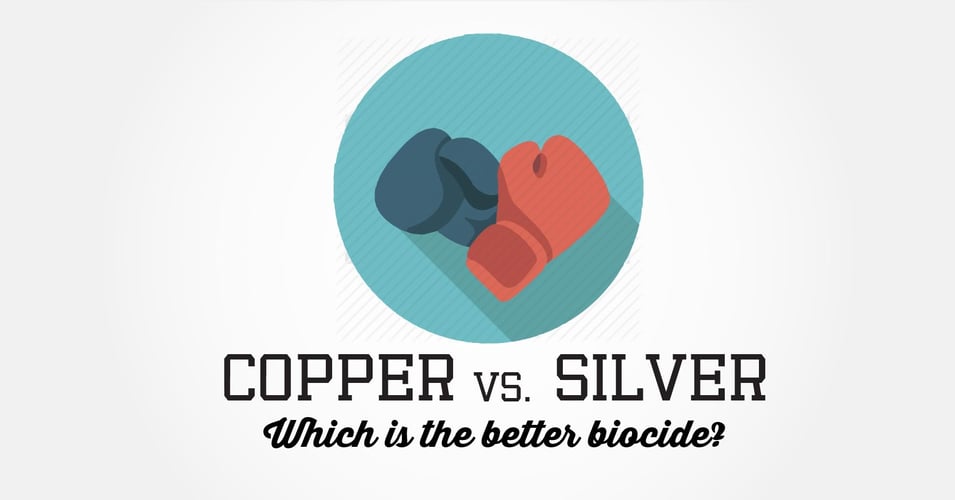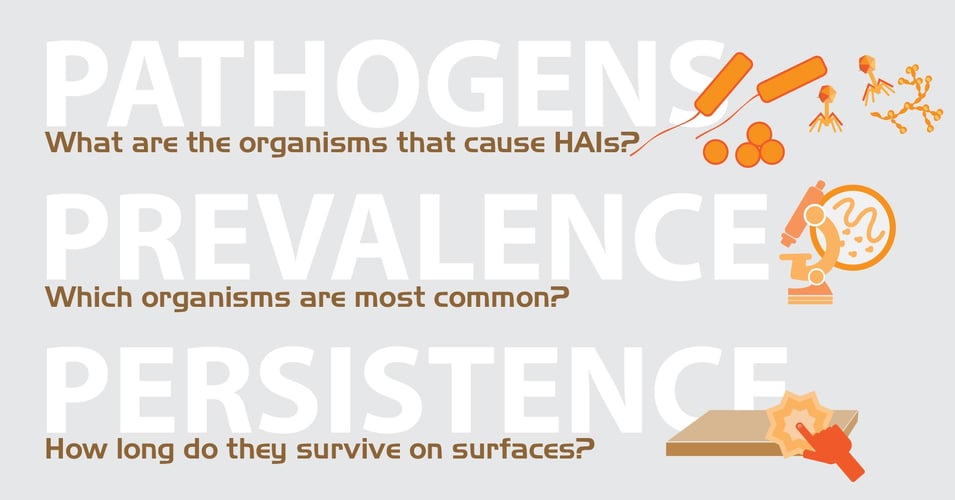Silver vs Copper: Which is the better biocide? (Part 2)

Today's post covers a vital comparison between copper and silver: Their ability to kill harmful bacteria. Biocidal activity - the active destruction of microorganisms at the cellular level - is the fundamental criteria when considering the two metals as possible infection interventions. We will explore under what conditions these metals kill bacteria in both laboratory and real-life settings.
Biocidal Activity
Both metals kill a broad spectrum of bacteria. Broad spectrum means Gram-positive and Gram-negative bacteria, including all families of bacteria strains.
Silver, however, must be in wet conditions to release the ions necessary to disrupt cell membranes. Even silver nanoparticles are not toxic unless silver ions are released, and to release these ions, silver must be in the presence of moisture.
In one important study, research demonstrated that silver's biocidal activity was measurable at 35oC (95oF) and at 95% relative humidity. At room temperature, the silver's antimicrobial activity was the same as stainless steel, that is, negligible activity. (The relative humidity of a typical room is 20%.) The graph below, taken from this study, shows the sharp decrease in MRSA organisms on the copper coupons, small squares of the metal, as compared to the unchanged MRSA organism numbers seen on the silver and stainless steel coupons.
MRSA viability at ∼22°C and ∼50% RH on C11000 copper (•), two silver-ion containing materials, Ag-A (Δ), and Ag-B (◊) and S30400 stainless steel (□).
Copper, in contrast, is able to kill Gram-positive and Gram-negative bacteria across all temperatures and all levels of humidity. In that same study, as well as in a number of other studies, copper's biocidal activity has been thoroughly documented.
This distinction is important since the biocidal activity must be possible in a typical patient room's ambient temperature and relative humidity. Copper's advantage in this area is its two ionic states, making it a more active element regardless of the presence of moisture for an oxidizer.
Who Wins? Copper
One could say (and many manufacturer's do) that a material is biocidal without specifying under what conditions it is biocidal. For this reason, some materials, including silver, are marketed as "biocidal" or "antimicrobial" when in reality they possess these abilities only when in very hot, very humid conditions. As of the time of this writing, silver is only used as a product-protection ingredient, used to prevent discoloration or odor, but not to make public health claims as regulated by the EPA.
Today we learned how toxic these metals are to bacteria cells. Next week's post will explore each metals' relative toxicity to humans, and how this impacts their use in healthcare environments.
Editor's Note: This post was originally published in October 2015 and has been updated for freshness, accuracy and comprehensiveness.
![EOScu Logo - Dark - Outlined [07182023]-01](https://blog.eoscu.com/hubfs/Eoscu_June2024/Images/EOScu%20Logo%20-%20Dark%20-%20Outlined%20%5B07182023%5D-01.svg)

![[infographic] Components of Preventive|Biocidal Surfaces Download and share!](https://no-cache.hubspot.com/cta/default/216314/interactive-178298302306.png)



